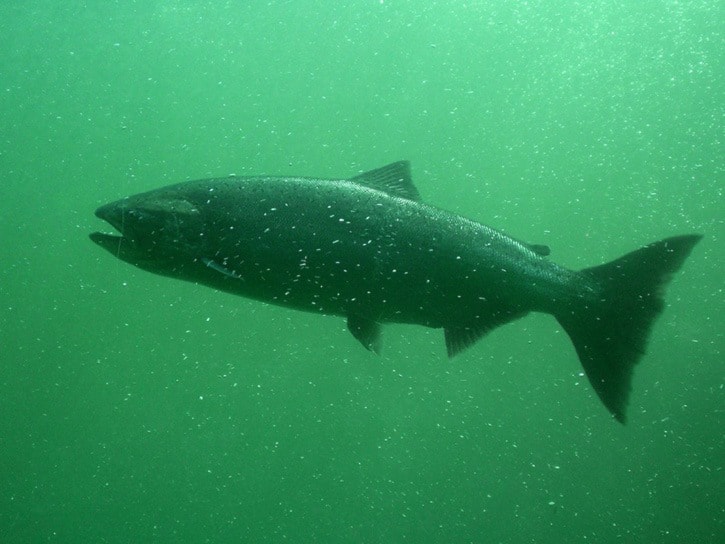Commercial and recreational fisheries along the southern Vancouver Island coast could be in rough seas as the Department of Fisheries and Oceans considers more restrictions on chinook salmon fishing this summer.
DFO’s proposal also includes the full closure of the Strait of Juan de Fuca and Georgia Strait approach waters to the Fraser River salmon fishery from May to July.
In a letter to stakeholders and First Nations, Jeff Grout, DFO Pacific regional resource manager, wrote the proposal is a “cautious management approach to the assumption that returns of Fraser River spring and summer … chinook will be less than 45,000 to the Fraser River this year.”
When there is a low salmon return, DFO sends a signal to all harvesters – commercial, recreational and First Nations – that there’s an anticipation of little or no fishing, and must get back to the sufficient spawning beds through conservation.
Grout added First Nations have raised concerns about whether DFO’s salmon integrated fisheries management plan is providing sufficient priority for First Nations’ food, social and ceremonial fisheries, given expectations for reduced harvest opportunities for Fraser chinook and sockeye.
While DFO is expected to confirm sometime this week, which direction it will take, the suggestion of more restriction and possible closure has left people like Christopher Bos, president of the South Vancouver Island Anglers Coalition, concerned.
“There is no more room for additional restrictions without seriously damaging the fishery,” he said, adding that the exploitation Juan de Fuca and Haro Strait chinook salmon anglers has dropped by at least 77 per cent of Fraser chinook stocks since restrictions began falling into place in 2008.
“Implementing a closure and introducing more restrictive measures will only further harm businesses that rely on our traditional year-round salmon fishery for their income,” Bos said.
“Lodges, guides, tackle stores, marinas, boat sales and repair businesses will all be negatively affected by these proposed DFO actions.”
In 2012, DFO implemented more restrictive measures and closures of fisheries with the idea to help conserve spring and chinook stocks. In this report, DFO noted the daily limit for the Juan de Fuca recreational fishery was two chinook per day (wild or hatchery marked) from March 1 to June 15.
Under the same report, First Nations fisheries were also limited in their exploitation rates on Fraser spring and summer chinook with a reduction of 45 per cent.
While no numbers or decision have been officially released by DFO, others, such as the Sport Fishing Institute of B.C. hopes federal Fisheries Minister Hunter Tootoo will work with both sides to find a compromise that could avoid further restrictions or closures of fisheries.
“We sincerely hope that DFO understands the need for a clear and transparent science-based approach to this issue which respects the value and needs of all sectors,” wrote the the Sport Fishing Institute of B.C. in a letter to members.
